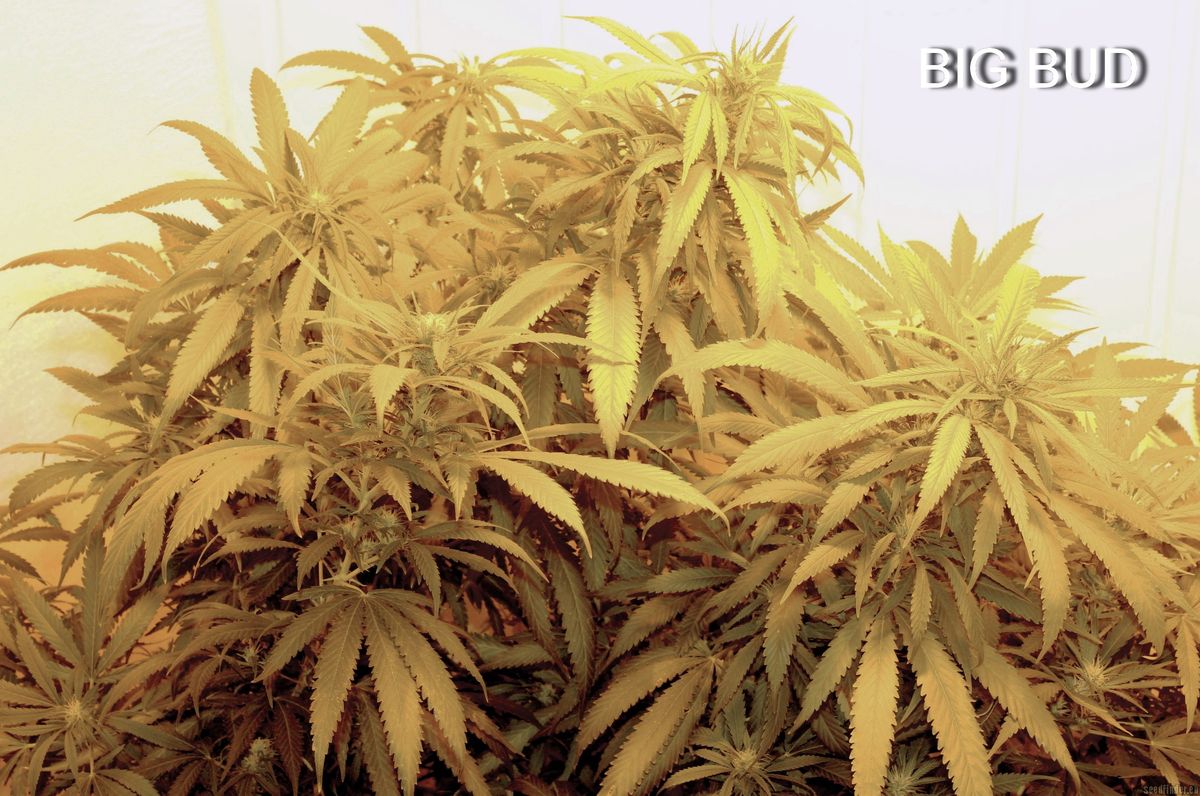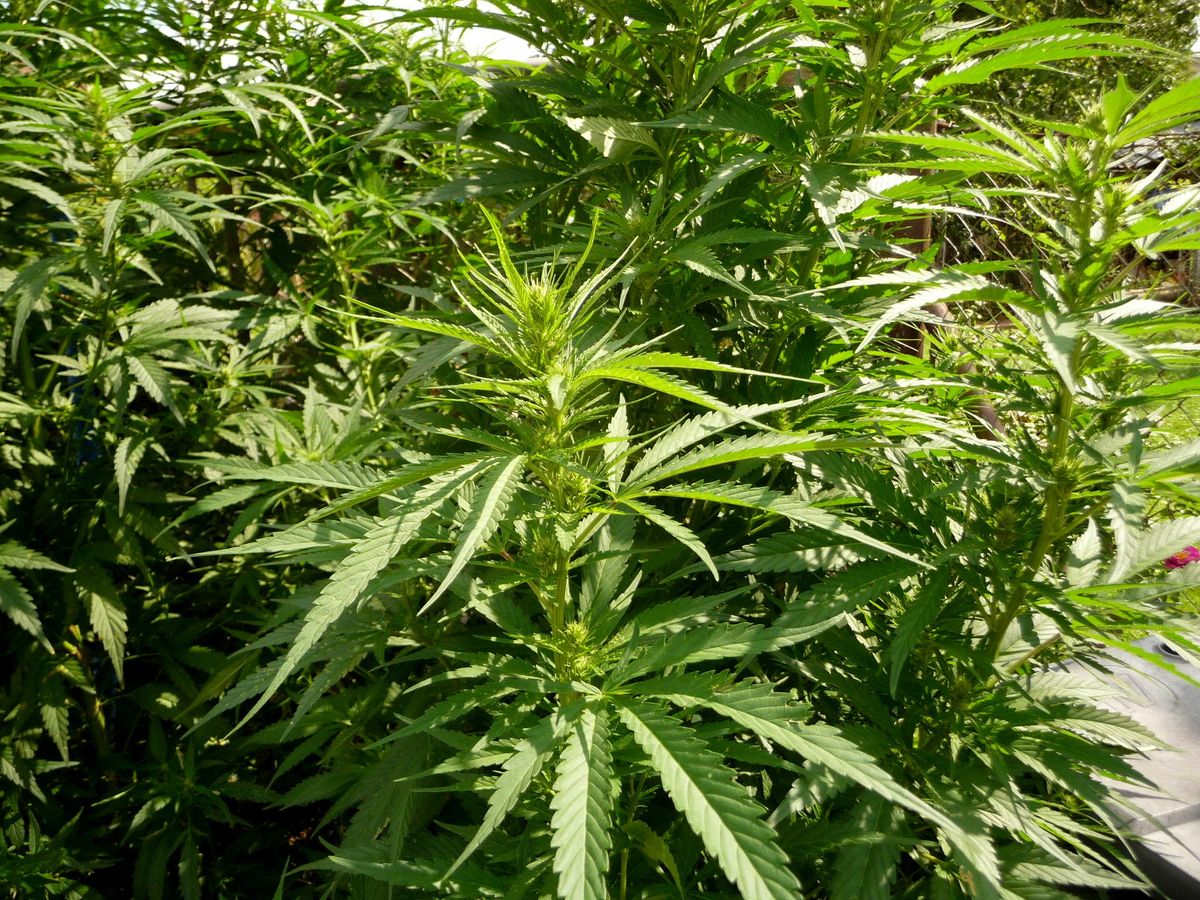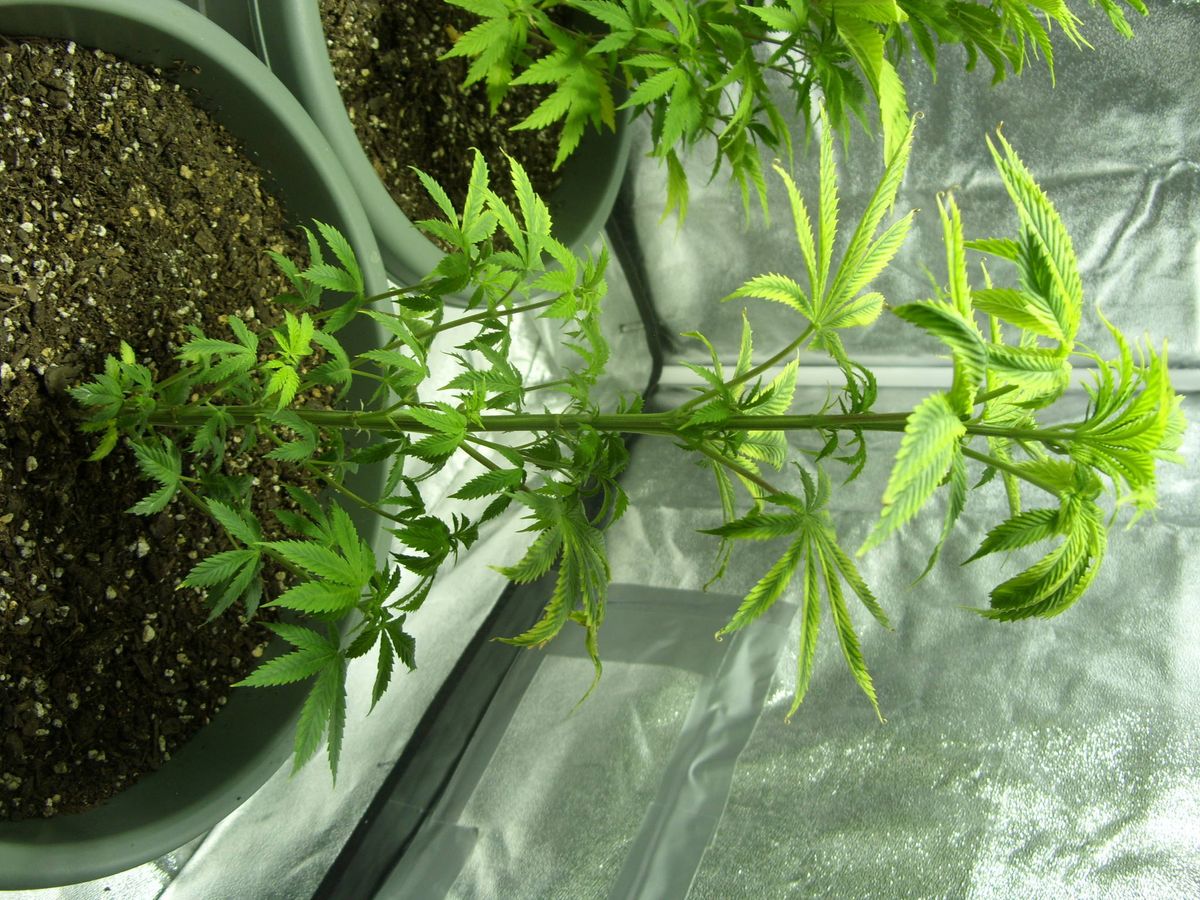The Skunk Ape strain is a unique cannabis variety that has garnered attention for its distinctive flavor profile, potent effects, and versatile growing characteristics. This comprehensive guide delves into the intricacies of the Skunk Ape strain, from its taste and medical benefits to cultivation tips for both novice and seasoned growers. Whether you’re looking to understand the psychoactive journey it offers or seeking advice on how to grow this strain in your garden, our guide provides valuable insights to enhance your cannabis experience.
Key Takeaways
- Skunk Ape strain offers a unique taste and potent psychoactive effects, making it popular for both recreational and medicinal use.
- When growing Skunk Ape outdoors, timing is crucial; planting in March-April for larger plants and late May-June for more discreet growth is recommended.
- Choosing the right Skunk Ape seeds involves considering the climate, with certain phenotypes performing better in specific conditions.
- Skunk Ape can be cultivated both indoors and outdoors, with proper nutrient management and training techniques like pruning and LST being essential for optimal growth.
- Preventive measures against pests and weatherproofing are vital for protecting your Skunk Ape crop, ensuring a healthy and bountiful harvest.
Diving into the Skunk Ape Strain: A Flavor and Effects Profile

The Unique Taste of Skunk Ape
When it comes to the Skunk Ape strain, connoisseurs are in for a treat that’s as intriguing as its name. This THC-dominant indica is known for its complex flavor profile that can only be described as a tapestry of earthy, spicy, and sweet notes. Imagine the rich, deep aromas of hashish and coffee, with chocolate undertones that create a sensory delight. Once lit, the Skunk Ape strain envelops you in a cloud of flavors that might remind you of a walk through a spice bazaar with a hint of the forest floor after rain.
But the Skunk Ape isn’t just about a single note; it’s a symphony of tastes. Cannabis enthusiasts who appreciate a variety of flavors will find themselves at home with this strain. From the nostalgia of weed fruity pebbles to the decadence of a glazed donut strain, there’s a whimsical journey for your taste buds. And for those moments when you’re left pondering, ‘why does my poop smell like weed,’ it might just be the lingering essence of the old G Kush or the early lemon berry strain you’ve enjoyed.
The Skunk Ape strain stands out in the cannabis market, not just for its unique taste but also for its kinship with other flavorful strains. Whether it’s the grape candy strain that evokes childhood memories, the creamy delight of an ice cream sandwich strain, or the playful sweetness of the white bubblegum strain, Skunk Ape is in good company. And let’s not forget the goo balls and candy grape strain that add to the tapestry of tastes, or the rice crispy edibles that bring a touch of comfort food to the mix. Each of these strains, including Skunk Ape, offers a distinct flavor experience that’s as memorable as it is enjoyable.
Psychoactive Journey: What to Expect
Embarking on the psychoactive voyage with Skunk Ape is akin to setting sail into a sea of deep relaxation and euphoria. Imagine kicking back with your favorite hobbit pipe, filled with the earthy goodness of this strain, as you drift into a realm where kingdom dreams are just a puff away. Skunk Ape’s effects are often compared to the enveloping calm of the old dirty biker strain, with a touch of the night terror strain’s ability to whisk you off to dreamland.
While the experience can vary from person to person, many report a profound sense of peace and a gentle cerebral buzz that’s perfect for unwinding after a long day. Here’s a quick rundown of what enthusiasts have shared about their journeys with Skunk Ape:
- Initial Onset: A warm, tingling sensation that starts at the crown and works its way down.
- Peak Experience: Heightened sensory perception and a cozy, blanket-like comfort.
- Wind Down: A gradual easing into drowsiness, often leading to a restful sleep.
Remember, the intensity of these stages can be influenced by your tolerance, the setting, and even the method of consumption. So, whether you’re a seasoned consumer or a curious newcomer, approach Skunk Ape with an open mind and let the adventure unfold.
Medical Marvels: Potential Benefits
The Skunk Ape strain isn’t just a hit at the besos dispensary or a favorite for those wielding a gandalf pipe; it’s also a treasure trove of potential medical benefits. Users report that Skunk Ape can be a game-changer for managing chronic pain, which might make it a staple at places like osage creek dispensary and super clinik. Imagine unwinding with a blinker vape filled with Skunk Ape after a long day, or indulging in a weed cake baked with the pb cookies strain or rollins strain for a touch of relief and relaxation.
For those seeking a more discreet experience, learning how to use a one hitter could be a revelation, especially with strains like lemon jeffery or fall 97. And let’s not forget the enthusiasts discussing the latest weed cake ideas at catalyst florence or picking up their prescriptions at columbia care chevy chase. Whether you’re a patient at apothecarium allentown or just a casual consumer at liberty health sciences bradenton, the Skunk Ape strain, with its robust profile, could be the catalyst for both relief and pleasure.
The 443 dispensary might showcase Skunk Ape alongside pipes from the hobbit, but it’s the strain’s potential to alleviate symptoms of anxiety and depression that truly makes it stand out. And for those who’ve tried the poochie love strain, adding Skunk Ape to your repertoire could be a wise move. As always, consult with a healthcare professional before integrating cannabis into your treatment plan, and remember that the effects can vary from person to person.
Growing Skunk Ape Outdoors: Tips and Tricks

Best Time to Plant Your Skunk Ape Seeds
Timing is everything when it comes to outdoor cannabis cultivation, and the Skunk Ape strain is no exception. For those looking to get the most out of their seeds, planting in March is ideal. This allows for an extended growth period, which is crucial for developing robust Skunk Ape plants that can handle those plug and play batteries with ease.
However, if you’re aiming for a quicker turnaround, autoflowering or fast version seeds are your best bet. These varieties are designed for speed, with the shortest life cycles available. Just check with your seed bank for the specifics.
Here’s a quick rundown of when to plant based on the type of Skunk Ape seed:
- Sativa: From March onward for a full growth cycle.
- Indica: March is good, but some may prefer to wait until June.
- Autoflowering: Anytime without frost, but more sun equals more bud.
Remember, the goal is to avoid frost while maximizing sunlight exposure. For those new to the game, a guide to the best cannabis seeds for beginners can be a lifesaver, especially when focusing on autoflowering strains for their simplicity and decent yields.
Combatting the Elements: Weatherproofing Your Crop
When you’re growing Skunk Ape, or any cannabis for that matter, you’re at the mercy of Mother Nature. But fear not, fellow cultivators! With a few savvy strategies, you can shield your precious plants from the harsh elements. Let’s talk about keeping your greenery safe, whether you’re a 420 kingdom veteran or a newbie at the greenery fort smith.
General Tips for Any Environment:
- Always cover the basics: light, temperature, nutrients, and protection from pests like spider mites and aphids.
- Be proactive with pest control to avoid infestations that can devastate your crop.
Cold and Humid Climates:
- Move plants to shelter during relentless rain to prevent water damage and mold.
- Maximize sunlight exposure to keep your plants happy and healthy.
Excessively Warm Climates:
- Opt for white pots to reflect heat away from the roots.
- Increase watering to combat the scorching heat, and be vigilant about summer storms.
Remember, whether you’re dealing with blinkers carts or bract house, the key is to adapt and overcome. By following these tips, you’ll be well on your way to a bountiful harvest, come rain or shine.
Pest Control: Keeping Your Skunk Ape Safe
When it comes to safeguarding your Skunk Ape strain from the jungle boys deerfield of the insect world, vigilance is key. Start by understanding the common threats in your area. Caterpillars, for instance, are notorious for munching on cannabis leaves, potentially devastating your crop. A proactive approach, using safe and targeted measures like BT Caterpillar spray, can save you a world of trouble.
But it’s not just about the bugs; hitting blinkers on environmental stress is crucial too. Sudden changes in weather can weaken your plants, making them more susceptible to pests. Here’s a quick checklist to keep your green beauties thriving:
- Regularly inspect your plants for signs of infestation.
- Employ natural predators or organic pesticides as a first line of defense.
- Use a blinker pen or similar device to gently blow away any pests without harming the plant.
- Stay on top of weather forecasts and shield your Skunk Ape from extreme elements.
Remember, a little attention goes a long way in keeping your Skunk Ape safe and sound.
Choosing the Perfect Skunk Ape Seeds for Your Garden

Indica vs. Sativa: What’s Best for Skunk Ape?
When it comes to choosing the right Skunk Ape seeds for your garden, understanding the distinction between indica and sativa strains is crucial. If you’re aiming for a potent psychoactive experience, indica seeds are your go-to. These seeds are celebrated for delivering a powerful body high, making them a favorite among those who frequent the trees of echo park for a relaxing session.
However, if medicinal benefits are what you seek, sativa seeds or those high in CBD might be more up your alley. Sativa strains are known for their uplifting and energizing effects, which can be beneficial for daytime use. For those who prioritize flavor and unique aromas, exploring seeds like Blue Dream or Sour Diesel could be rewarding.
Here’s a quick rundown of what to consider when selecting Skunk Ape seeds:
- Indica seeds: Ideal for strong psychoactive effects and compact plant growth.
- Sativa seeds: Best for medicinal properties and energizing highs.
- CBD-rich seeds: For those looking for therapeutic benefits without intense psychoactivity.
Remember, the best electric weed grinder can make all the difference in preparing your Skunk Ape for use. A fine grind ensures even burning or vaporization, which is key to experiencing the full spectrum of flavors and effects.
Climate Considerations: Picking the Right Phenotype
When it comes to cultivating Skunk Ape, or any cannabis strain for that matter, climate plays a pivotal role in determining which phenotype will thrive in your garden. The key is to match your local weather patterns with the strain’s genetic predispositions.
For those in cooler, more humid regions, selecting seeds that are resilient to moisture and lower temperatures is crucial. Think about strains like Northern Lights or White Widow, which are known for their hardiness in less-than-ideal conditions. On the flip side, if you’re blessed with a warm Mediterranean climate, you’ve got a wider selection. Strains like Amnesia Haze and Durban Poison love soaking up the sun and will reward you with bountiful yields.
Here’s a quick rundown of what to consider based on your climate:
- Cold and humid climates: Opt for seeds that can withstand the chill and damp, such as Skunk #1 or Afghan Kush.
- Warm climates: Go for seeds that can handle the heat, like Pineapple Express or Girl Scout Cookies.
Remember, the goal is to ensure your Skunk Ape plants get the maximum daily sunlight hours and are protected from the elements, whether that means moving them to shelter during heavy rain or employing preventive measures against mold.
Maximizing Yield: Techniques for Lush Growth
To ensure your Skunk Ape garden thrives, focusing on the quality roots corunna is crucial. Healthy root systems are the foundation of vigorous plant growth and bountiful yields. Here’s how to give your Skunk Ape the best start:
- Begin with selecting the right soil or growing medium. Natural soil cultivation is often preferred, but ensure the soil quality is top-notch.
- Opt for seeds that align with your growth period goals. Planting in March can lead to more robust plants, while autoflowering or fast version seeds offer a quicker turnaround.
When it comes to outdoor cultivation, remember to:
- Position your plants to receive maximum daily sunlight hours.
- Use white pots in excessively warm climates to reduce heat absorption.
- Adjust watering frequency with rising temperatures and protect your plants from extreme weather.
By addressing these basic cannabis care aspects and implementing preventive measures against pests, you’ll be well on your way to a successful harvest.
The Ins and Outs of Skunk Ape Cultivation

Indoor vs. Outdoor Cultivation: What Skunk Ape Prefers
When it comes to the Skunk Ape strain, growers often debate whether to cultivate indoors or outdoors. The jungle boys north miami beach aficionados might tell you that Skunk Ape thrives in a controlled environment, where variables can be meticulously managed. However, this strain also has a reputation for doing well in the great outdoors, where it can stretch its roots and bask in the natural sunlight.
Choosing the right seed is crucial for Skunk Ape cultivation. For those aiming for an outdoor grow, selecting seeds that are resilient and have an open structure to take full advantage of sunlight is key. On the other hand, indoor growers might prefer seeds that are more suited to the limited space and controlled conditions of an indoor setup.
Here are some general tips for any cultivation environment:
- Ensure basic cannabis care: light hours, temperature, nutrients, and fertilizers.
- Protect your crop from pests like spider mites and aphids with preventive measures.
- Be prepared for weather challenges such as heavy rain or strong winds, especially if growing outdoors.
Ultimately, whether you choose to grow Skunk Ape indoors or outdoors, the decision should align with your cultivation goals, available space, and climate considerations. Remember, the key to a successful harvest is understanding and catering to the specific needs of your chosen strain.
Nutrient Management for Optimal Growth
Getting the nutrient mix just right is like being a chef in the garden; it’s all about balance and timing. For Skunk Ape, a strain that’s as complex as a fine wine, you’ll want to ensure you’re hitting all the right notes. Start with a solid base of nitrogen (N), phosphorus (P), and potassium (K), the holy trinity of plant nutrients. But don’t stop there; micronutrients like calcium, magnesium, and iron play supporting roles that are just as crucial.
Here’s a quick cheat sheet for Skunk Ape nutrient management:
- Vegetative Stage: High nitrogen, medium phosphorus, medium potassium
- Flowering Stage: Low nitrogen, high phosphorus, high potassium
Remember, the vegetative stage is all about leafy growth, so nitrogen is your star player. Once you switch to the flowering stage, phosphorus and potassium take the lead to support those budding beauties. And just like any good cultivation practice, always monitor your plants for signs of nutrient deficiencies or excesses. Yellowing leaves? Could be a nitrogen issue. Purple stems? A phosphorus boost might be in order.
Of course, the Skunk Ape strain, with its extravagant flavors and effects, deserves a tailored approach. Adjust your feeding schedule based on the plant’s response and the specific conditions of your grow environment. And if you’re exploring the nuances of marijuana cultivation, akin to wine production, you’ll find that dialing in the perfect nutrient regimen is key to unlocking the full potential of your crop.
Training Your Skunk Ape: Pruning and LST Methods
When it comes to cultivating the Skunk Ape strain, training your plants is a crucial step to ensure a bountiful harvest. Pruning and Low Stress Training (LST) are techniques that can significantly influence the shape and yield of your plants. At Klutch Lorain, they’ve mastered these methods, resulting in some of the most robust Bees Buds in the region.
Pruning involves selectively removing parts of the plant to encourage growth in other areas. It’s like giving your Skunk Ape a haircut to promote better light penetration and air circulation. Here’s a simple guide to pruning your Skunk Ape:
- Identify the main stem and primary branches.
- Remove any small branches or leaves that are dead or dying.
- Cut away lower branches that receive little light to redirect energy to the top of the plant.
LST, on the other hand, is all about gently bending and tying down branches to expose more of the plant to light. It’s a non-invasive way to train your Skunk Ape, and here’s how you can do it:
- Start LST when your plant has 4-6 nodes.
- Gently bend the main stem and secure it with plant ties.
- Adjust the ties as the plant grows to maintain the desired shape.
Remember, patience and consistency are key when training your Skunk Ape. Happy growing!
Frequently Asked Questions
What is the Skunk Ape strain known for?
The Skunk Ape strain is known for its unique taste profile, potent psychoactive effects, and potential medicinal benefits. It is a cannabis variety that has gained popularity among both recreational users and medical marijuana patients.
When is the best time to plant Skunk Ape seeds outdoors?
The best time to plant Skunk Ape seeds outdoors is from March to April for large and lush plants. For a more discreet, low-height crop, planting can be delayed until late May or early June, particularly with indica-dominant seeds.
How does climate affect the choice of Skunk Ape seeds?
Climate plays a significant role in selecting Skunk Ape seeds. For cold and humid climates, it’s best to choose seeds like Northern Lights or Skunk #1, while warm climates are suitable for a wider range of seeds, including Skunk Ape.
Should I grow Skunk Ape indoors or outdoors?
Skunk Ape can be grown both indoors and outdoors. The choice depends on your space, climate, and cultivation goals. Outdoor cultivation allows for natural sunlight and a more open structure, while indoor cultivation offers more environmental control.
What cultivation techniques can maximize Skunk Ape yield?
To maximize Skunk Ape yield, growers can utilize techniques such as pruning, Low Stress Training (LST), and ensuring optimal nutrient management. Planting seeds in March can also extend the growth period, resulting in larger plants.
How can I protect my Skunk Ape crop from pests and weather?
Protecting your Skunk Ape crop involves implementing preventive measures against pests like spider mites and aphids, and safeguarding against weather extremes with measures for heavy rain, strong winds, frost, hail, and drought.
- SEO Powered Content & PR Distribution. Get Amplified Today.
- PlatoData.Network Vertical Generative Ai. Empower Yourself. Access Here.
- PlatoAiStream. Web3 Intelligence. Knowledge Amplified. Access Here.
- PlatoESG. Carbon, CleanTech, Energy, Environment, Solar, Waste Management. Access Here.
- PlatoHealth. Biotech and Clinical Trials Intelligence. Access Here.
- Source: https://greencamp.com/skunk-ape-strain/




